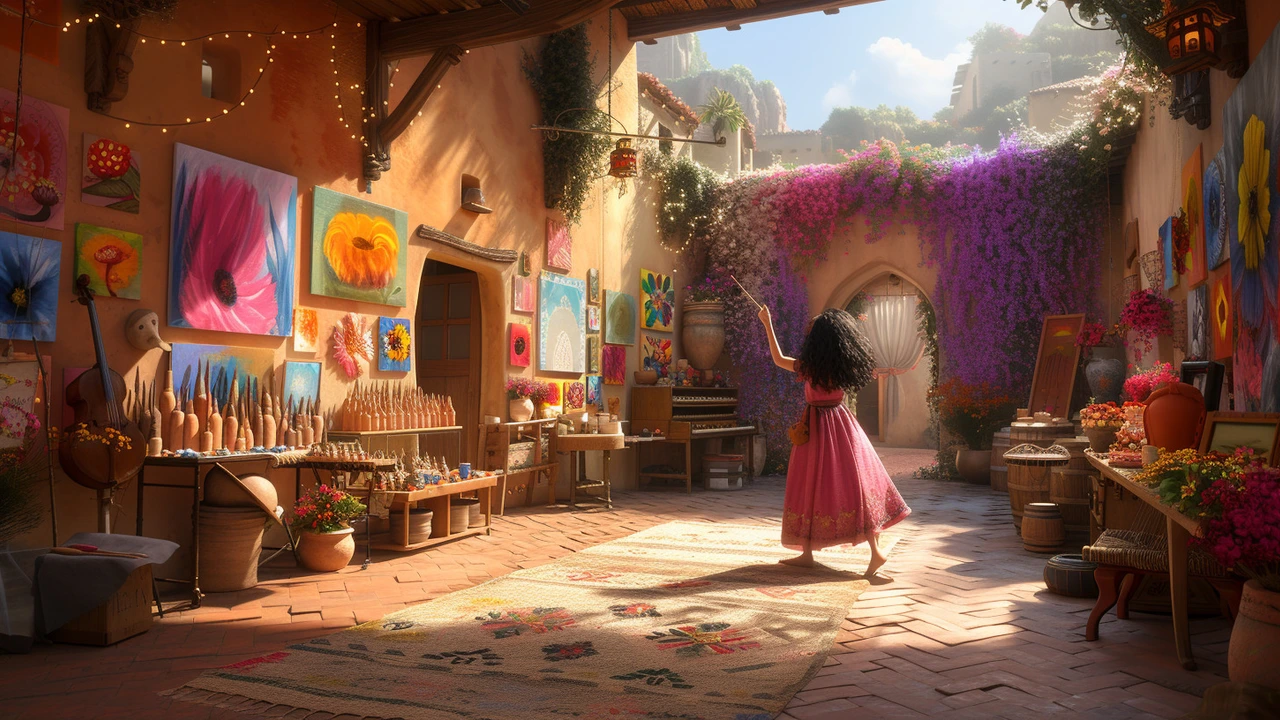Peering into The Core of Creative Arts Therapies
If you're like me, you might've assumed that any type of therapy involving doodles, stitches or dance steps was purely for the bohemian fringe. After all, Emery, which happens to be my name, is known for his left-brain analytical outlook. And yet, the underpinnings of creative arts therapies have a concrete basis in psychology and neuroscience. In essence, they are an amalgamation of art and science, capable of untangling deep-rooted mental and emotional knots.
The Spark of Science in Creative Expressions
So how exactly does painting a canvas or strumming a guitar help an individual cope with trauma, grief, or stress? Let's dig into the nitty-gritty of it all. The principle here rests on the idea of non-verbal communication, tapping into parts of the brain that aren’t easily accessed through traditional therapy or talk-alone approaches. While these methods can also be helpful, they often require a person to be able to put their feelings into words, which can be problematic if the events are traumatic or too painful to verbalize. Creative art therapies offer a medium for expressing these feelings in a non-verbal, abstract, non-threatening way. In other terms, they are a spectacular way of eliciting the language of emotions.
Harold’s Creative Therapeutic Epiphany
Today I remember my old buddy Harold. Harold was a stoically silent man, someone who always kept his problems locked up. I remember when he was diagnosed with a severe clinical depression. Out of the blue, Harold's doctor suggested an art therapy session. The day he larkishly splattered paint onto a canvas was transformational for him. It was like an emotional dam giving way, allowing him to vent his pent-up stresses. And I, witnessing Harold's transformation, was convinced of the effectiveness of these therapies.
The Healing Powers of Art Therapy
As Harold discovered, art therapy can be a powerful tool for self-exploration. The process of making art allows us to slow down and connect with our emotional world. When you are engaged in creating art, science tells us that you are activating the same parts of the brain as when you meditate. This supports increased focus and mindfulness, as well as reducing anxiety, boosting self-esteem, and even enhancing brain plasticity. The benefits of art therapy, thus, extend beyond the confines of the therapy room.
Drama Therapy and its Effects
In the grand playhouse of life, drama therapy allows individuals to explore different roles, enact life scenarios, and express complex emotions. By acting out different scenarios or conflicts, participants can gain new insights into their feelings and behaviors, promote change and improve interpersonal relationships. What's fascinating from a neurological standpoint is the activation of mirror neurons during drama therapy, supporting empathy and social cognition. As a science enthusiast, it tickles me to know end that something inherently artistic can have such profound neurological influences.
Expressive Writing and Mental Health
As someone who writes, might I say, rather prodigiously, I have seen the benefits of pen-to-paper catharsis firsthand. The simple act of writing about personal experiences can actually enhance immune function, speed wound healing, and decrease the likelihood of doctor visits. There is even research suggesting that expressive writing can improve mood disorders, reduce symptoms among cancer patients, improve health after a heart attack, and boost memory. If that doesn’t convince you of the immense healing power of words, I ask you, what will?
Dance and Movement Therapy: A Step towards Healing
Forget twerking or doing the moonwalk, dance and movement therapy (DMT) is all about using bodily gestures as a form of communication. It's a holistic approach that incorporates physical, emotional, and mental health. The focus is on the connection between the mind and body to promote emotional and mental health. One dance move at a time, individuals in DMT can improve self-perception and body image, reduce stress, anxiety and depression, and enhance cognitive function. A little shimmy here, a little shake there, and you've got yourself a pathway to improved mental health.
Music Therapy Strikes a Chord with Healing
Finally, no discussion on creative art therapies would be complete without touching upon the melodic respite offered by music therapy. Be it through listening or creating music, this form of therapy helps individuals cope with a variety of physical and emotional conditions. Ongoing research offers data about the role music therapy can play in stimulating areas of the brain responsible for cognition, motor control, emotions, and auditory processing. In other words, the latent power of a tune or a rhythm can swell into a crescendo of recovery for individuals grappling with conditions such as Alzheimer’s, Autism, or even Post-traumatic stress disorder.
So, there you have it. Who would have thought, the same Emery who used to scoff at these ‘flowery’ therapies has just penned down a detailed article on their scientific foundations! The beautiful intermingling of art and science in creative arts therapies truly provides a fascinating lens to look at healing and recovery. It's not all about paint strokes, pen jottings, dance steps or musical notes, it's about understanding the science behind these therapeutic avenues and unveiling the impact they can have on our mental health and wellbeing.
